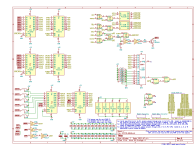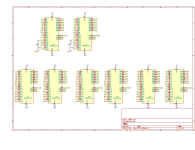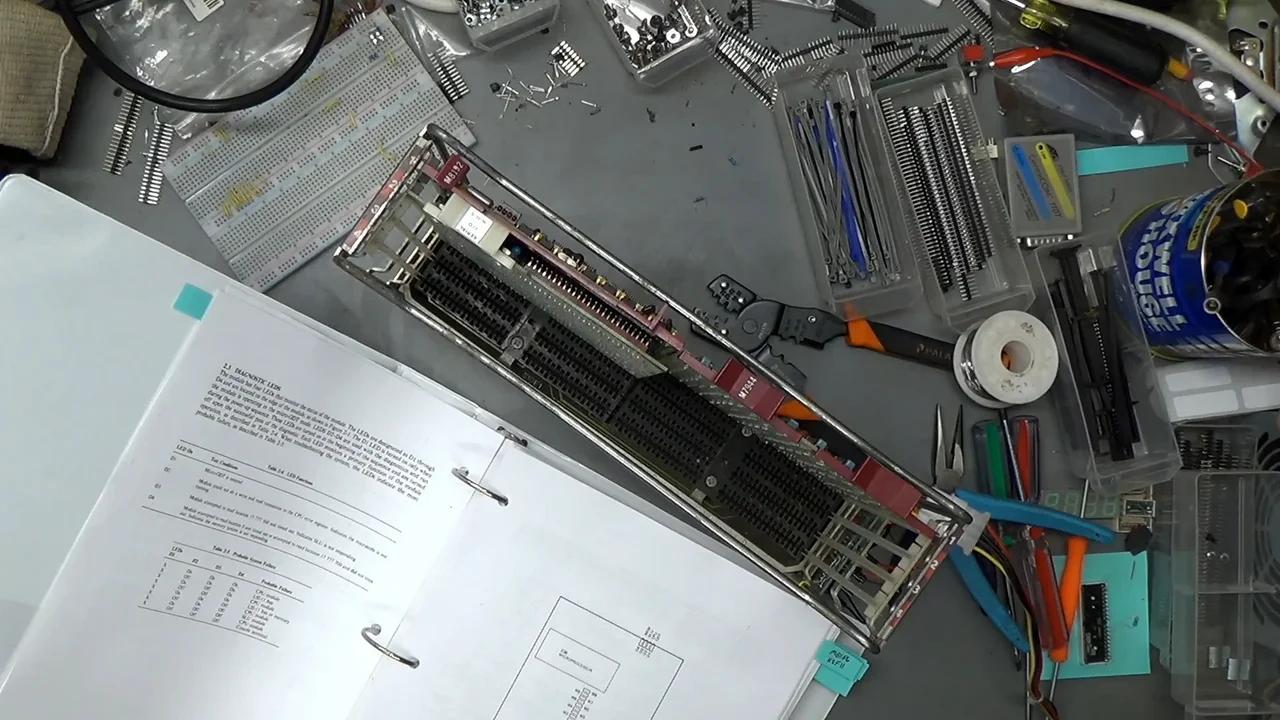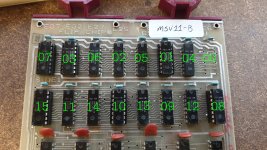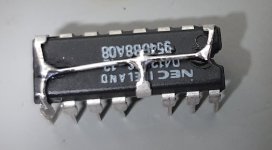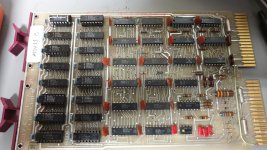So, please forgive my ignorance here. I'm not trying to argue with any of the info presented, just to understand. Please remember that I am just a dumb hick in a shack full of old computers, and I was a software engineer by profession before returning to the family business, so my digital electronics knowledge is almost entirely self-taught and therefore full of all the holes and confusions that you'd expect from that.
Anyway.
Here's a schematic of the Heathkit H11-1 4k memory module, which I've reassembled from 4 separately scanned pages. A couple of traces in the scan margins were missing, but I believe that I have reconstructed the missing bits correctly.
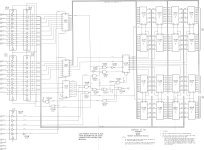
This contraption appears to be driving the data bus with a pair of 74LS240s which, unless I am reading an inaccurate datasheet, do not appear to be open collector drivers.
I'm going to have to go back and study the QBus spec harder, but my initial impression was that it was terminated to somewhere around 3.3v through a voltage divider, by the CPU card (and another terminator at the other end of the bus if there were multiple backplanes chained together), and then whatever was driving the bus pulled it up to 5v or down to 0v, kinda like SCSI appears to work (but which I may also be not-understanding lol). But indeed the DS8641 is an open collector driver. But then again, what Heathkit is doing must also work. Very peculiar.
My understanding of open collector drivers is that their big advantage is being able to make wired-or connections. I can see where this would be a requirement on signals that can be asserted by more than one device at a time, interrupts, dma requests, etc. But I suppose that no more than one device at a time will ever be driving the data bus (assuming that all devices in the system are well-behaved), so perhaps that is how Heathkit is getting away with using LS240s. Generally only the CPU will be sinking the output of the memory card, with everything else tristated off the bus, so the memory card can "get away" with driving the bus high. Perhaps Heathkit's way works "well enough" in a small single-backplane system like the H11, but would be troublesome in a larger installation.
Am I on the right track here, or am I full of poo?
IIRC the TRS-80 Model II also uses the LS640 as its bus driver. Those suckers are almost $10 each these days. There has to be a way to cobble something together with more common parts that will behave "well enough". D:
